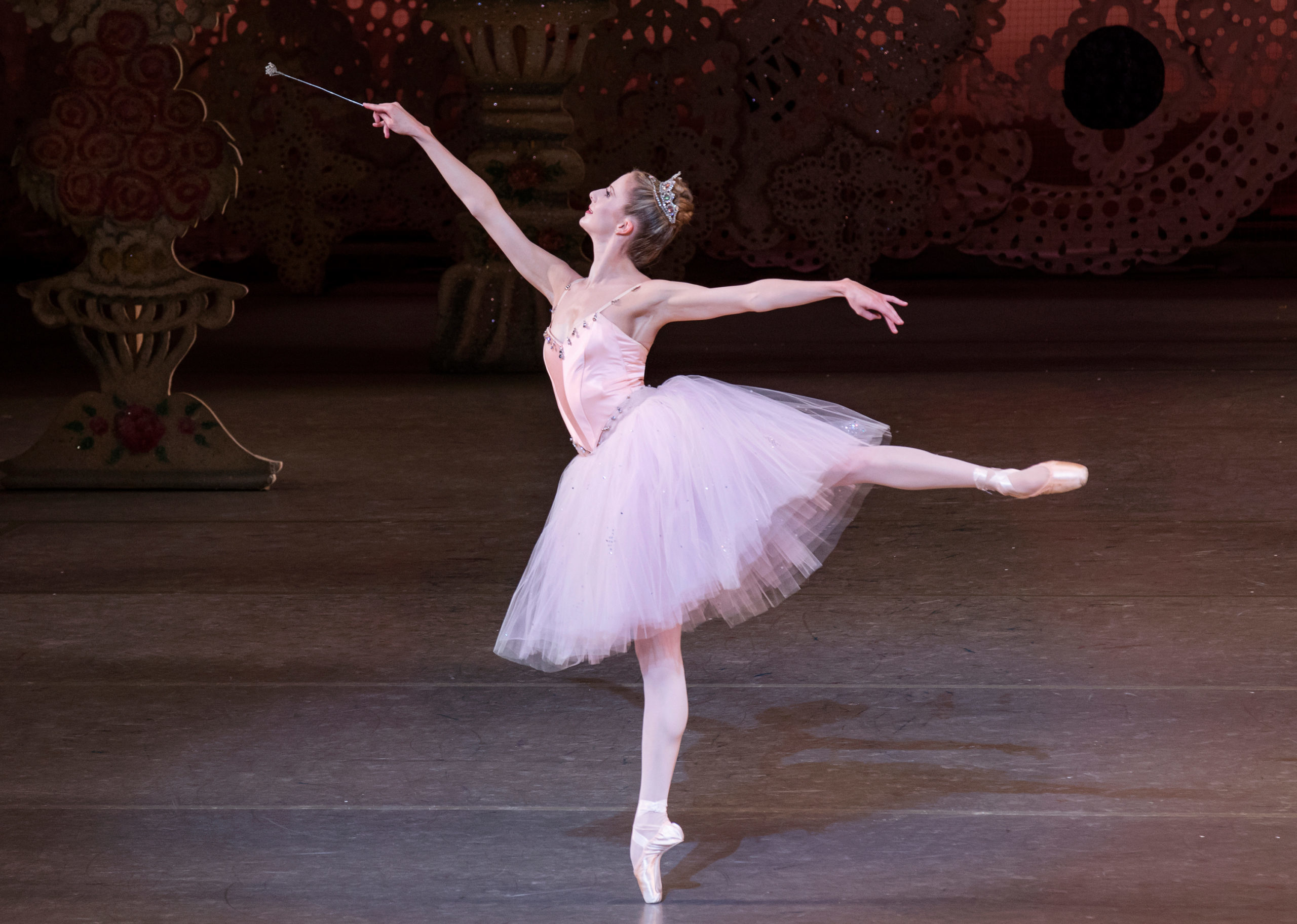December 15, 2023
Faculty Nutcracker Memories
Watch as members of the SAB faculty share some of their cherished memories of performing in George Balanchine's The Nutcracker® and why the ballet is special to each of them.

New York City Ballet’s production of George Balanchine’s The Nutcracker® opens next week and with it comes the return of a cherished holiday tradition.
In 1954, Mr. Balanchine created his own version of the beloved Christmas-themed ballet, in which young SAB students danced dozens of parts, including the lead roles of Marie and the Nutcracker Prince. Since then, students from our School have lit up the stage in this production, dancing alongside the company members of New York City Ballet (many of whom are SAB alumni.) And while each part in the ballet is special, the lead role of the Sugarplum Fairy carries with it an unforgettable kind of magic – from her beautiful costumes and magic wand to her enchanting variation set to one of the season’s most iconic pieces of music – one cannot help but be dazzled by the Sugarplum!
To find out a little more about what it’s like to dance this beautiful role, we turned to one of NYCB’s principal dancers, and our own SAB Faculty Member, Sterling Hyltin, who has performed it year after year. Read on for our interview with a real-life Sugarplum Fairy and get a first-hand account of a dash of her performing magic…
When did you first perform as the Sugarplum Fairy and do you recall anything memorable about that experience?
I first performed as the Sugarplum Fairy during the 2006 Holiday Season. It was the first time I had ever held the most central role of a ballet; so, I have always viewed it as my breakthrough ballerina role and I cherish it for that reason.
What’s the most exciting part about the role for you?
Everything about it! From dancing with those precious angels to the final dip at the end of the Grande Pas de Deux with the Cavalier, to the Sugarplum Fairy’s two costumes, to the iconic Tchaikovsky music… I could go on and on! Also, the role of Sugarplum has taken on new meaning for me now that I am sharing the stage with my School of American Ballet students who I am blessed enough to teach on a weekly basis. I feel thrilled and passionate to share stage time and the magical experience of George Balanchine’s The Nutcracker with them.
What’s the most challenging aspect of the role?
The most challenging aspect of the role is exploring the change that occurs in the Sugarplum Fairy’s demeanor from the opening of Act II to the Grande Pas de Deux. The final pas requires an extra level of regality and elegance. It is here that the audience must know without a doubt why she is the protector of the Kingdom of Sweets. While the choreography and the music help naturally in this endeavor, there are still artistic choices to be made for each and every moment.
Do you do any pre-performance special Sugarplum prep?
Yes, during Act I, I always stop wherever I am in my barre warm-up to step closer to the wings to watch the tree grow. It just keeps going and going and it gives me chills and at least one tear every single time, even after all these years.
Nutcracker is often the first ballet young children see and the first they get to perform in, what do you hope younger audience members (and those on stage with you) take away after seeing you dance Sugarplum?
Joy! Just a ton of ebullient joy!!
If you’re looking to bring some joy and extra magic to your December, we invite you to join us for our annual Nutcracker Family Benefit – raising funds to support SAB’s scholarship fund and NYCB’s education programs. The event includes a matinee performance of George Balanchine’s The Nutcracker® followed by a special party on the Koch Theater promenade with crafts, treats, and special guest appearances.
December 15, 2023
Watch as members of the SAB faculty share some of their cherished memories of performing in George Balanchine's The Nutcracker® and why the ballet is special to each of them.
November 27, 2023
In need of a holiday gift for the dance-lover in your life? Allow us to help! Check out our curated list of gift ideas that's sure to impress...
March 23, 2023
See how SAB students prepare for all the special children's roles in NYCB's repertoire.